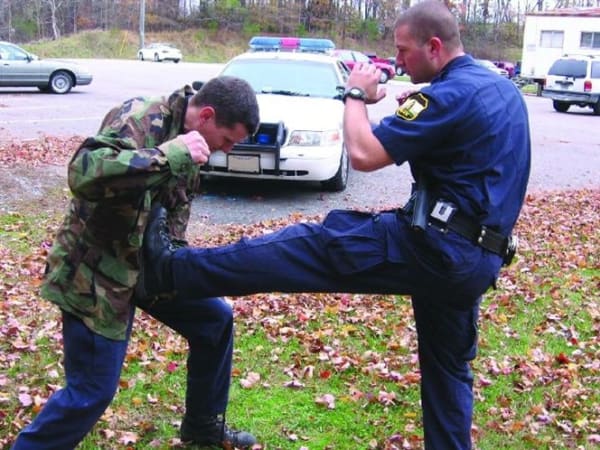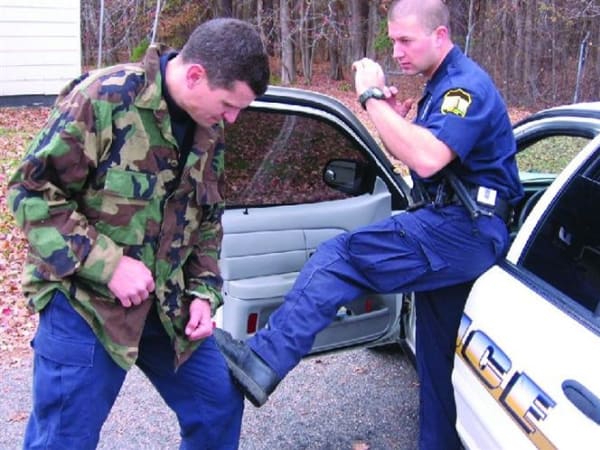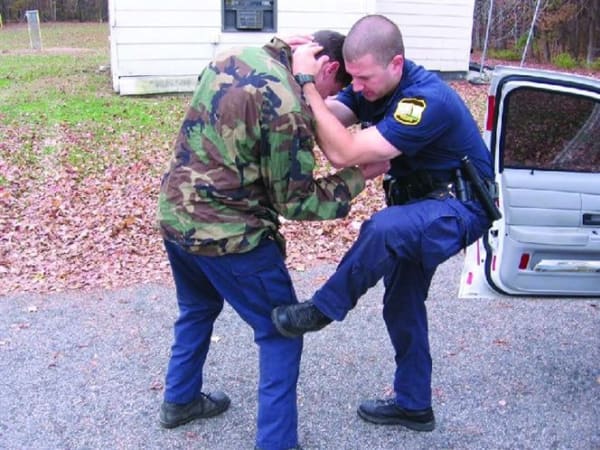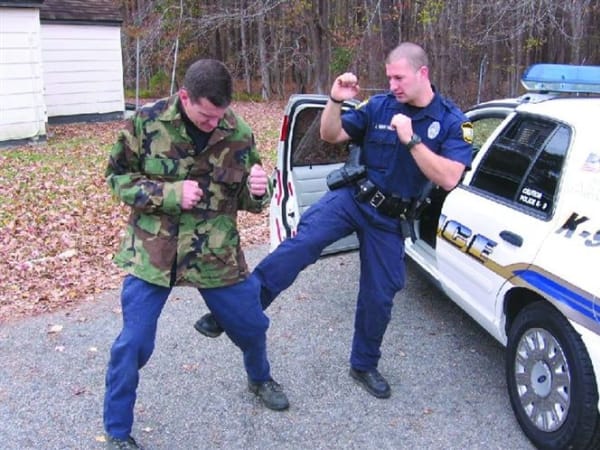A swift kick can do wonders in a violent confrontation, but you have to know how to deliver it. Law enforcement agencies equip and train officers with pistols, rifles, shotguns, batons, OC, TASERs, canines, horses, basllistic shields, battering rams, emplty hand self defense, and countless other potentially dangerous law enforcement tools, but may be hesistant when an officer properly and justifiably uses kicks for self-defense or to subdue a suspect. The U.S. Supreme Court held in Graham v. Connor that the reasonableness of an officer's actions must be judged by the circumstances at the time the force is used. It did not restrict of limit the tactics that an officer can employ.
Using Your Foot

The officer's starting position for each of the kicks will be a typical fighting or interview stance with one leg forward and the officer's weapon side away from the suspect. This non-threatening stance allows you to diffuse a potentially hostile situation and still puts you in a posioton to react to any sudden attacks.

This kick is very effective for stopping an assailant's forward progress or moving him backward. This also helps keep you outside of the attacker's punch range, adding to your safety. Duty boots increase the effectiveness of the technique. Finally, there is room for error with this kick, so even if you don't land the kick exactly, it may have the desired effect.

The leg stomp kick can be delivered with either your front or rear leg. This kick is very effective especially during close-in encounters. This is a quick stomping kick aimed at the assailant's knee area. If the assailant is a little farther away, your toes will be turned outside, striking with your heel.

The mechanics are the same with either leg. Raising your leg and lifting your knee, stomp down at 45 degrees, using your hip to drive your leg down, striking the assailant's knee. Attacking the legs often catches an assailant by surprise and disrupts his balance.

Like the previous kicks, there is a great deal of room for error because a connection along any portion of the assailant's leg is likely to give the desired effect, and duty boots enhance the effectiveness of the technique.

